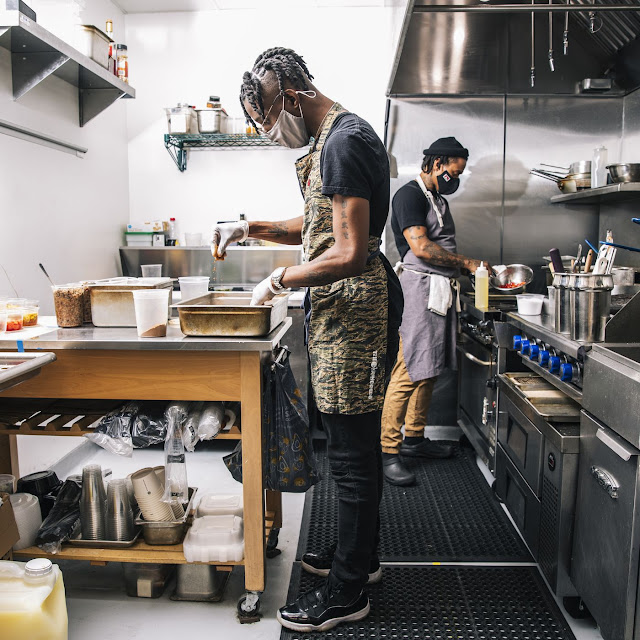Ghost Kitchen Market Poised for Tremendous Growth by 2023
 |
| Ghost Kitchen Market |
Market Overview:
Ghost kitchens refer to commercial facilities solely dedicated to the preparation of food for delivery or takeout. These kitchens operate without dine-in services, enabling restaurants to focus on fulfilling online orders efficiently. The rise of food delivery platforms and changing consumer preferences have contributed to the growing popularity of ghost kitchens.
The advantages of ghost kitchens are twofold. Firstly, they allow restaurants to cut costs by minimizing overhead expenses associated with traditional brick-and-mortar establishments. Secondly, they provide a streamlined operation dedicated solely to fulfilling delivery orders, leading to increased efficiency and customer satisfaction.
The need for ghost kitchens is driven by the booming food delivery market. Consumers increasingly prefer the convenience of online food delivery and takeout, creating a high demand for dedicated facilities that can cater specifically to this market segment. Ghost kitchens offer restaurants an opportunity to expand their reach, reduce costs, and tap into the growing trend of online food ordering.
Market Key Trends:
One key trend observed in the ghost kitchen market is the emergence of virtual brands. Virtual brands are restaurant concepts that exist solely in the virtual realm, without any physical presence. These brands utilize ghost kitchens to offer specialized cuisines or unique food concepts directly to consumers through online delivery platforms.
Virtual brands have gained popularity due to their ability to provide innovative and niche food offerings without the constraints of traditional brick-and-mortar operations. They can leverage existing ghost kitchen infrastructure to launch multiple virtual brands simultaneously, catering to different consumer preferences.
The global Ghost Kitchen Market Demand is estimated to be valued at US$ 71.14 Billion in 2023 and is expected to exhibit a CAGR of 12% over the forecast period of 2023-2030, as highlighted in a new report published by Coherent Market Insights.
Segment Analysis:
The ghost kitchen market can be segmented based on type, application, and region.
Based on type, the market can be divided into standalone ghost kitchens and kitchen-sharing platforms. The dominating sub-segment is kitchen-sharing platforms. This can be attributed to the cost-effectiveness and flexibility offered by these platforms. Kitchen-sharing platforms allow multiple restaurant brands to share the same kitchen space, reducing overhead costs and improving efficiency. Additionally, these platforms provide access to a wider customer base through online food delivery apps and aggregators.
Based on application, the market can be segmented into independent restaurants, chain restaurants, and franchise restaurants. Among these, chain restaurants dominate the market. This can be attributed to the increasing number of chain restaurant brands adopting ghost kitchen models to expand their geographical reach while minimizing costs. Chain restaurants can streamline their operations and standardize their menu offerings across different locations through ghost kitchens.
Key Takeaways:
The global ghost kitchen market is expected to witness high growth, exhibiting a CAGR of 12% over the forecast period from 2023 to 2030. This growth can be attributed to several factors. Firstly, the rising demand for online food delivery services is driving the adoption of ghost kitchens. With the increasing convenience-seeking consumer base and the popularity of food delivery apps, ghost kitchens enable restaurants to meet this demand efficiently by focusing solely on food preparation and delivery.
From a regional perspective, North America is expected to be the fastest-growing and dominating region in the ghost kitchen market. This can be attributed to the high penetration of online food delivery services and the presence of key players in the region. The United States, in particular, is witnessing significant growth in the ghost kitchen market due to the increasing preference for convenience and the high consumer spending on food delivery.
Key players operating in the ghost kitchen market include CloudKitchens, Kitchen United, REEF Technology, Virtual Kitchen Co., Zuul Kitchens, Deliveroo Editions, Kitopi, DoorDash Kitchens, Grubhub/Seamless, Swiggy Access, Uber Eats Kitchens, Rebel Foods, Ghost Kitchen Brands, JustKitchen, and Keatz. These players are focusing on expanding their geographical presence, partnering with restaurants, and investing in technology to enhance their ghost kitchen operations.



Comments
Post a Comment